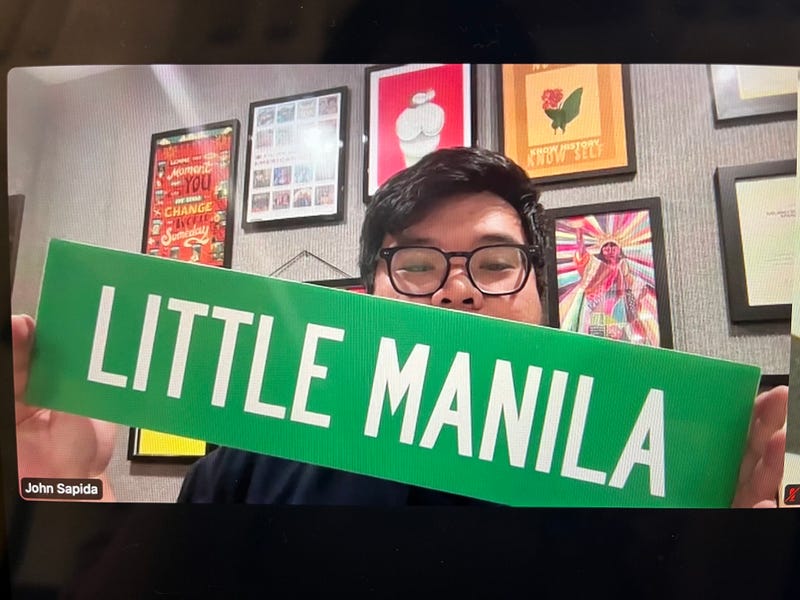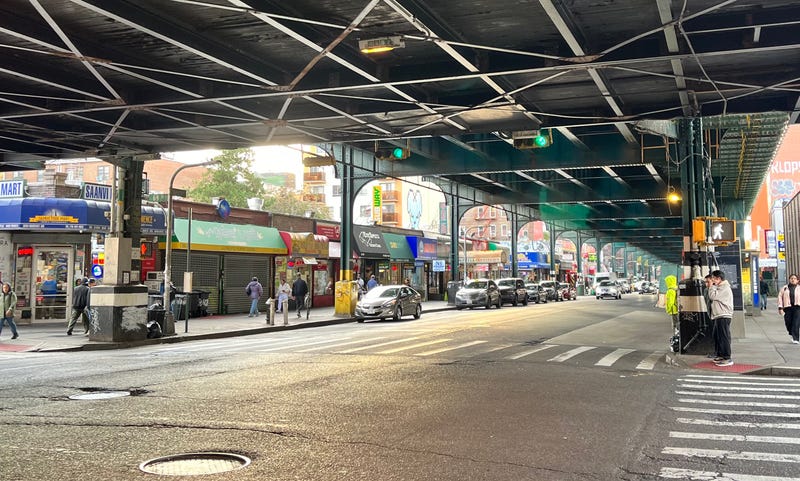
NEW YORK (1010 WINS) -- New York City is where most Filipino Americans in the state reside, and over half of them can be found in Queens, where Little Manila has attracted the Filipino diaspora for generations.
The neighborhood wasn't called Little Manila until a group called Little Manila Queens Bayanihan Arts (LMQBA) decided to take action in the summer of 2020.
The idea came about after the unveiling of one of their murals four years ago, which reads, Mabuhay, a Filipino expression with many meanings, including "cheers," "welcome" and "long live." Painted on the sidewall of a restaurant called Amazing Grace, it was made to honor the businesses and healthcare workers during the COVID-19 pandemic. It did that—and ended up inspiring its own artists to make Little Manila official in the process.
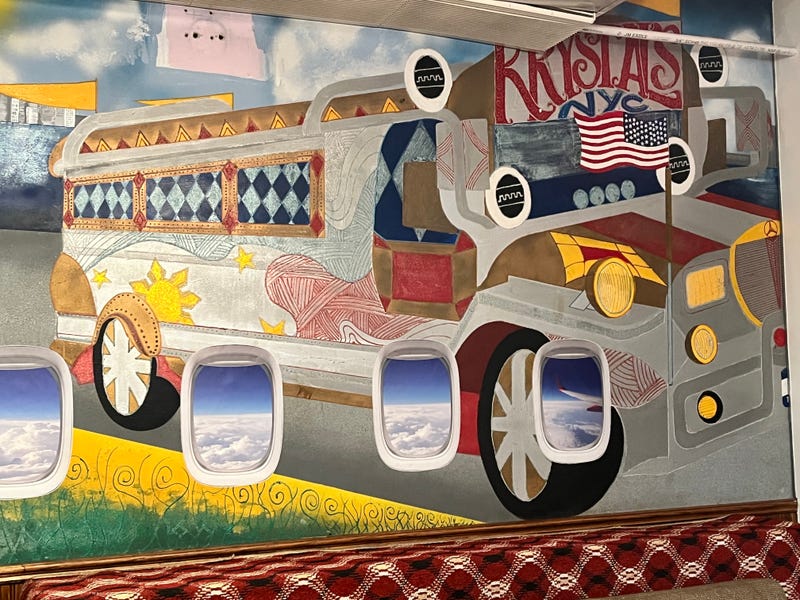
"After the mural was revealed, one of our artists asked, 'Why don't we make Woodside our own?'" said Ezra Undag, who is one of the cultural organizers of LMQBA.
LMQBA spearheaded the petition and, along with other organizations, began a two-year-long campaign to co-name the intersection of Roosevelt Avenue and 70th Street.
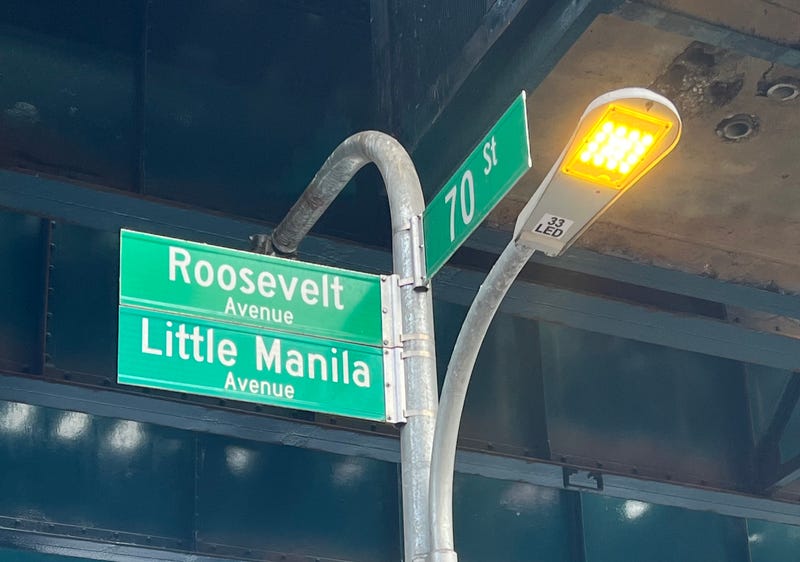
Their hope was for "Little Manila [to] be recognized as more than an ethnic enclave that adds to the diversity of the borough and the city, but home to a community who has been an integral part of the care and thrivance of fellow New Yorkers."
The petition was approved in December 2021, and the hope was fulfilled on June 12 of the following year—the same day as the Philippines' Independence Day.
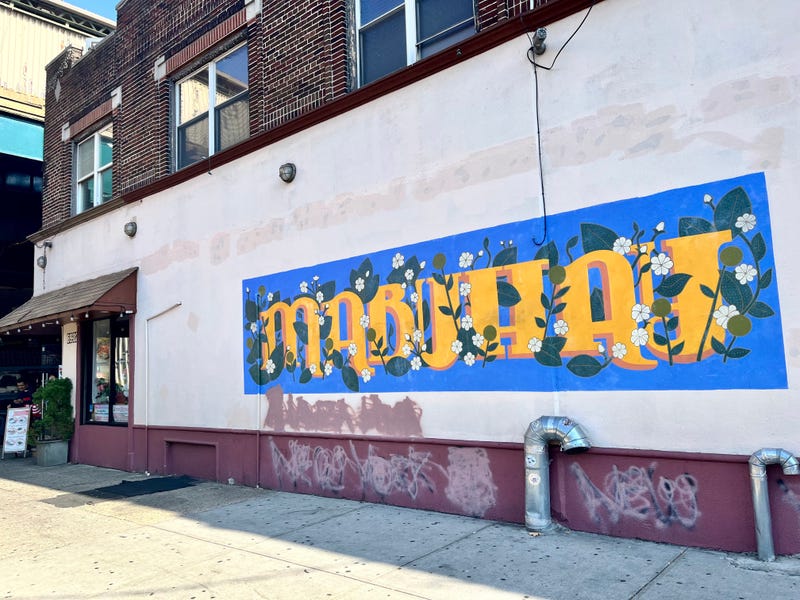
Kevin Nadal, the national president of the Filipino American National Historical Society (FANHS), was present during the unveiling of the Little Manila sign and said that even though it's small, it is still very symbolic.
"It's the city's recognition that this neighborhood is historic," Nadal said. "It's the community's validation that we are part of this great city and that we have made huge contributions to our communities, and specifically to the borough of Queens."
Filipino restaurants, grocery stores, and other Filipino-owned establishments line Roosevelt Avenue from 61st to 70th streets, and most of them were around long before Little Manila was recognized.
Amazing Grace, previously called Krystal's, is one of the first restaurants in Woodside to serve Filipino cuisine to the community and has been a go-to for many Filipino Americans for nearly 30 years.
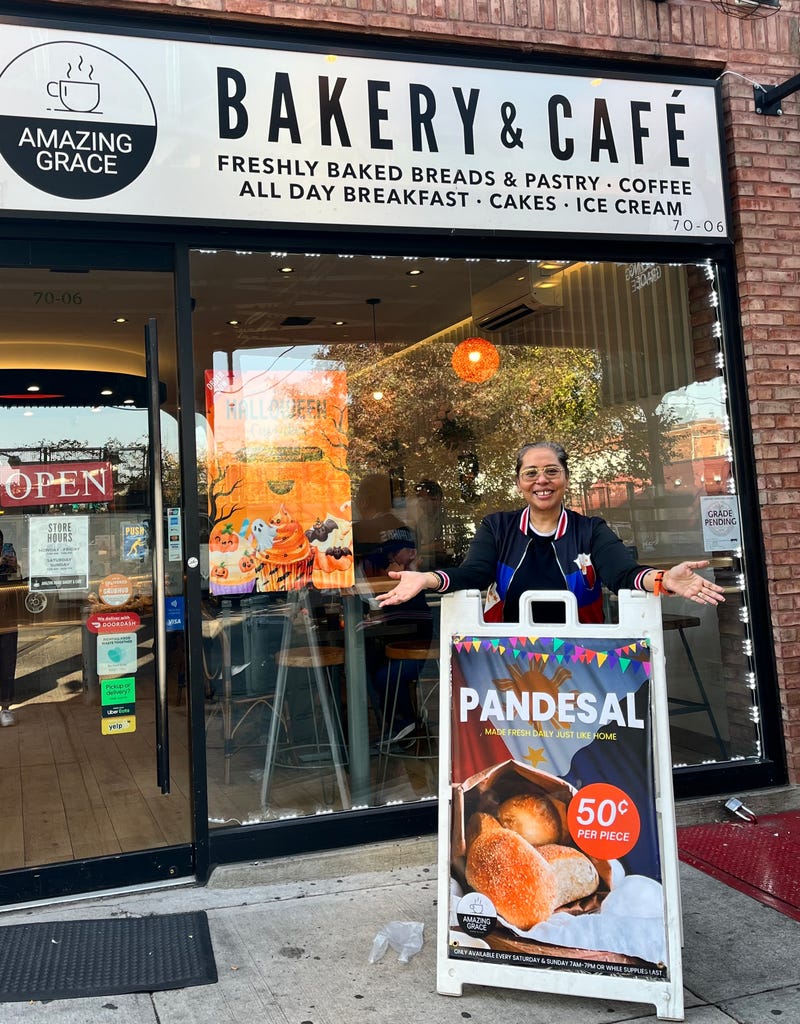
Jeanette Bocobo, their director of operations, moved to New York in 2015 and considers Woodside one of the deciding factors for staying and calls it a home away from home.
"I could see balut [sold] on the streets, the smell of barbecue, people shouting in your own language," Bocobo said. "If I didn't see that block, probably I wouldn't be staying here in New York."
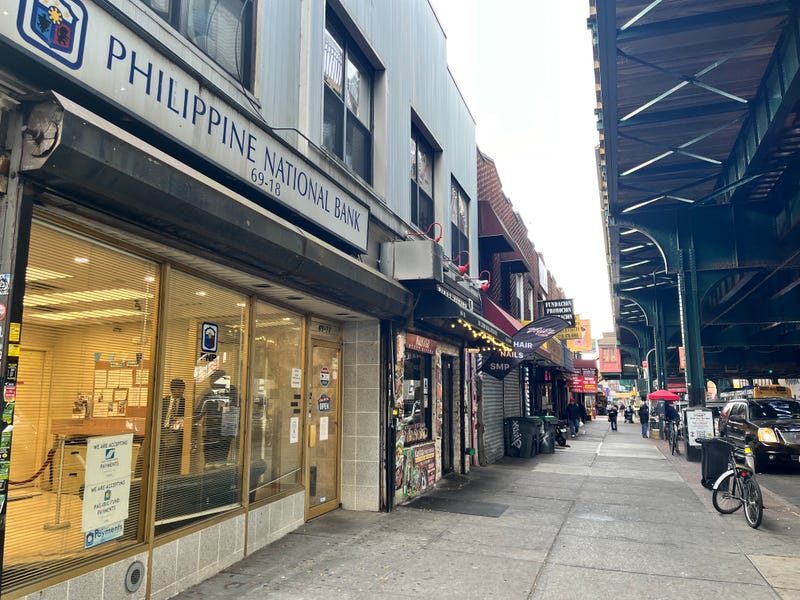
Several Filipinos, like Bocobo, started out in the U.S. to work. Though her career puts her in the restaurant business, others are in the medical field.
In 1965, the Immigration and Nationality Act was passed, allowing skilled workers from other countries to move to the U.S. When New York faced a shortage of nurses in hospitals, Filipinos began trickling in.
The recruitment of Filipino nurses to New York City hospitals in the 1970s landed many of them at NYC Health + Hospitals/Elmhurst, which caused a multitude of Filipinos to settle in the surrounding neighborhoods, including Woodside. From then on, the Filipino population in Queens has only been increasing.
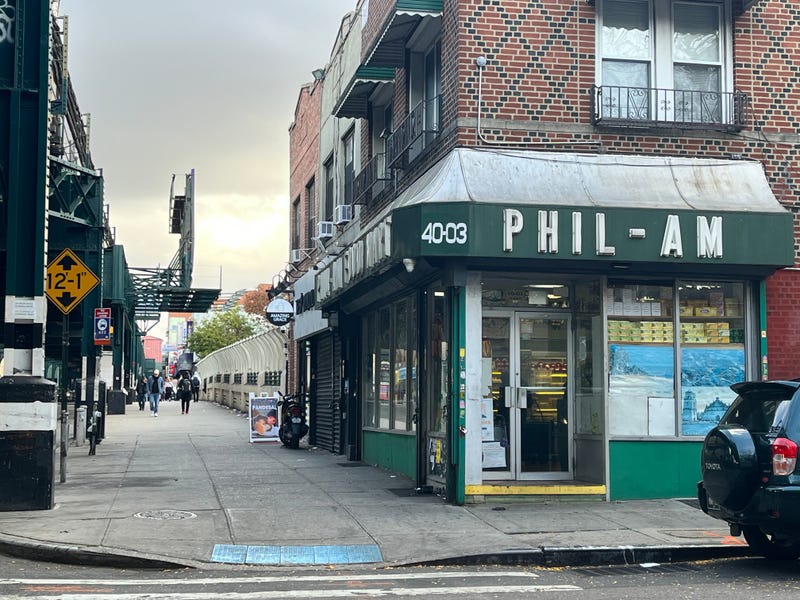
There are over 80,000 Filipino Americans in New York City, and over 50% of them live in Queens, according to the Asian American Federation.
"Filipinos tend to follow their family members," Nadal said. "So even though there may have been a good number of folks who came as part of the medical industry and going to many of these hospitals, many other folks came just knowing that this is where a lot of Filipinos were."
For John Sapida, the New York chapter president of FANHS, going where the Filipinos are has helped him embrace his identity. He was born in the Philippines but moved to New Jersey when he was 9 years old and spent most of his childhood in the U.S.
“Little Manila really helps me as a person, as historian [and] as someone who is just learning to continue to love my culture and my identity as Filipino American,” Sapida said.
